Astronomical telescope eye mirror type Introduction of astronomical telescope mirror structure diagram
Astronomical Telescope eye mirror type Introduction of astronomical Telescope mirror structure diagram
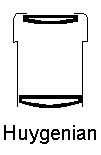
1. Huachangs mirror (H)
The Dutch scientist Huachaus was designed in 1703. It is composed of two flat convex lenses. The front is a field mirror and the back is a mirror. Their convex surface is facing the end of the object mirror. The focal length of the field mirror is generally 2-3 times the mirror.It is half of their focal length.Huachangs mirror is about 25-40 degrees.In the past, the Huachangs mirror was the first choice of a small refraction mirror, but with the increase of the light power of the Telescope, the disadvantages of the obvious disadvantages of the field of view, low contrast, color difference, and ball differences. Therefore, this structure is generally generally generallyUse the eyepiece of the Microscope.
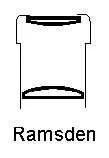
2. Romans Deng mirror (R)
The design was successful in 1783, and it was also two -sets and two groups of structures. It was composed of two flat convex lenses with the same focal length and the same focal length.The spacing is 2/3-3/4, which is the focal length of the two. The color difference is slightly large, and the field song is significantly reduced. The field of view is about 30-45 degrees. At present, it is rarely used.
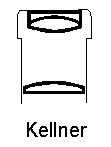
3. Klena mirror (K, RKE)
It was developed on the basis of Ranzesden mirror. It appeared in 1849. The main improvement was to change the single -piece lighting mirror to the dual -glued color differential lens, which greatly improved the improvement of color difference and edge image.At 40-50 degrees, there is a comfortable pupil distance when it is low, so it is currently widely used in some low-dimensional Telescopes, but it is not well performed when it is high.In addition, the field mirror of the Kelna eye mirror is close to the focal plane, so that the dust on the field mirror is easy to images and affects observation, so pay special attention to cleaning.
A US company has further improved on the basis of Kylene mirror and developed RKE eyepiece. The edge image is better than the classic structure.

4. Abbey disorders (or) (or)
Designed by Abe, one of the founders of Germany's Zeiss Company in 1880, it is a structure of four pieces and two sets. Among them, the field mirror is a three -glue lens, and the mirror is a flat -convex lens.Like and the field of the field to the degree of difficulty, it also has a flat field of viewing and sufficient pupils at a flat field of 40-50 degrees. It has a good performance in each magnification and has been widely adopted.
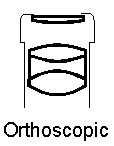
5. Ailifer wide -angle mirror (ER)
The successful development in 1917 was designed for military Telescopes that needed a large field of view. It was the originator of all wide-angle mirrors. The structure was 5 pieces and three groups, and the field of view was as high as 60-75 degrees.It is very suitable for observing deep space celestial bodies. Because the edges are scattered, it is not suitable for high -power design. Its performance in low times is very good.

6. Prove mirror (PL)
Also known as symmetrical mirror.It is composed of the two sets of two sets of dual -gluing color differential lenses. Its parameter performance is equivalent to OL eyepiece, but it has a greater pupil distance and field of view. The cost is lower, and it is suitable for all the magnitudeThe eyepiece has been assigned a variety of improved types.
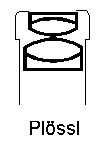
7. Nagler's eyepiece mirror
A high -end eyepiece designed by Americans in 1979 has an amazing field of 82 degrees, high -quality edges like quality and comfortable pupils, as well as complex structures and high prices, and weight of more than one kilogram.